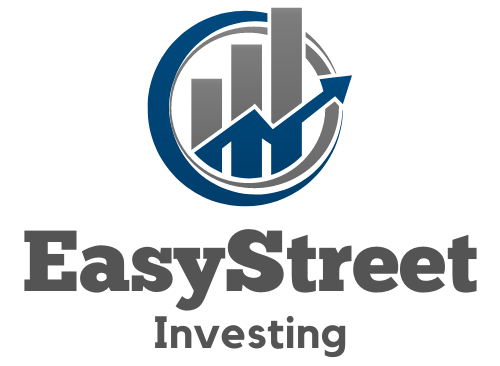Investing in the newest market entrants just got a whole lot easier. Have you ever considered dipping your toes into the fast-paced world of Initial Public Offerings (IPOs)? You’re not alone. An IPO ETF, or Exchange-Traded Fund focused on IPOs, offers a unique avenue for investors to gain exposure to a diversified portfolio of newly listed companies. In this article, we’ll explore how these innovative funds work and why they might be a smart addition to your investment strategy.
Let’s break it down: an IPO ETF aggregates the excitement of multiple stock debuts into one accessible investment. By including this type of fund in your portfolio, you get a slice of the action without the hassle of picking individual stocks. As we delve into the mechanics behind IPO ETFs, we’ll cover how they can potentially boost your market presence and diversify risks. Stick with us, and you might just discover a dynamic way to ride the wave of new market opportunities.
Important Highlights
1. IPO ETFs offer investors a unique opportunity to participate in the growth potential of newly public companies, which can be otherwise difficult to access due to the volatility and unpredictability of individual IPOs. By pooling together numerous recent initial public offerings into one exchange-traded fund, these ETFs allow for simplified exposure to a typically high-risk investment area.
2. Diversification is a key benefit of investing in IPO ETFs, as they mitigate the risk associated with single-stock performance. This means that even if some companies within the ETF falter post-IPO, the impact on the overall investment is cushioned by the collective performance of other holdings within the fund.
3. The fees for IPO ETFs tend to be higher than those of traditional index funds or other sector ETFs; investors should be aware that this cost can affect net returns. It’s important for potential investors to weigh these fees against the potential benefits and consider their overall investment strategy and tolerance for risk.
4. Timing plays a significant role in the performance of IPO ETFs, given that new market entrants can experience significant price swings shortly after listing. For more information on market timing strategies related to IPO investments, respected financial institutions such as J.P. Morgan provide insights and guidance on navigating these waters.
5. Liquidity can vary with IPO ETFs, as some newly listed companies might trade less frequently than established stocks. This can lead to wider bid-ask spreads or difficulty selling shares quickly without impacting the price, so investors should assess their need for liquidity when considering an IPO ETF as part of their portfolio.
Understanding IPO ETFs and Market Exposure
Gaining exposure to the latest public companies can be a thrilling yet challenging venture for investors. IPO ETFs (Initial Public Offering Exchange-Traded Funds) offer a unique avenue to participate in the excitement of newly listed companies. By pooling together various recent IPOs, these funds allow investors to purchase shares that reflect the collective performance of these market newcomers.
An IPO ETF typically tracks an index composed of newly public companies, often those that have been listed within the last two years. This structure provides diversified access to a sector often characterized by high volatility and potential growth. When investing in an IPO ETF, you effectively buy into a range of companies that have recently undergone the transition from private to public ownership, mitigating some of the risks associated with individual IPO investments.
The Benefits of Investing in IPO ETFs
One of the key advantages of investing in IPO ETFs is diversification. Instead of putting capital at risk with a single company, investors benefit from the collective performance of several entities. This reduces unsystematic risk or the impact of an individual company’s performance on your investment portfolio.
Moreover, liquidity is less of a concern with IPO ETFs compared to individual IPO stocks, which can face significant trading volume fluctuations. Since ETFs trade on major exchanges just like stocks, they can be bought and sold throughout the trading day with ease, providing flexibility and convenience for investors.
IPO ETFs also offer transparency; holdings are disclosed regularly, ensuring that investors know exactly where their money is being allocated. Additionally, professional management means that the fund is curated by experts who can navigate the complexities of newly public companies.
Dynamics of IPO Market Performance
The performance dynamics within an IPO market are subject to rapid change as new entrants debut and share prices adjust to real-world trading conditions. It’s essential for investors to understand that while IPO ETFs may capture the initial surge often associated with public offerings, they also bear witness to post-IPO corrections.
It’s not uncommon for newly listed companies to experience a period of price adjustment as market hype fades and valuations align more closely with fundamentals. Therefore, while there might be considerable upside potential in investing in recent IPOs through an ETF, it’s crucial to acknowledge and prepare for possible volatility.
Selecting The Right IPO ETF For Your Portfolio
To select an appropriate IPO ETF for your portfolio, consider factors such as past performance, fee structure, and index methodology. Look at how the fund has performed since its inception compared to relevant benchmarks and other assets classes. Understanding the fees involved is also vital; higher expense ratios can eat into your returns over time.
Familiarize yourself with how the underlying index selects and weights its components—this affects how well the fund reflects market trends related to new listings. Some funds might lean towards larger-cap or more mature companies while others may include smaller or high-growth potential firms.
Strategies for Maximizing Returns With IPO ETFs
To maximize returns when investing in IPO ETFs, consider timing your entry points around market cycles or economic indicators that suggest robust activity for new listings. Keep abreast with financial news to gauge investor sentiment towards upcoming IPOs. Also, balance your exposure with a longer-term view; while short-term gains can be enticing, patience often plays a pivotal role in realizing substantial returns from growth sectors.
Risks Associated With Investing in IPO ETFs
Despite their benefits, investing in IPO ETFs does come with inherent risks. A concentration in recent market entrants could lead to amplified losses during downturns as these companies may lack established track records or strong financial foundations compared to older firms. It’s important not just to chase potential gains but also consider risk tolerance levels before allocating significant portions of one’s investment portfolio towards these instruments.
Tax Implications Of Investing In IPO ETFs
In addition to understanding market risks, be aware of tax implications associated with trading IPO exchange-traded funds. As with any investment product generating dividends or capital gains, it’s advisable to consult with a tax professional or utilize reputable resources from sites like IRS.gov when considering potential tax liabilities incurred by transactions within these financial vehicles.
? What Are Some Key Tips For Gaining Market Exposure Through IPO ETFs?
- Analyze historical fund performance but do not rely solely on past results as indicative of future success.
- Consider expense ratios and seek out cost-efficient funds that don’t compromise on quality or strategy alignment.
- Diversify across different sectors where possible within your portfolio containing an IPO ETF allocation.
- Maintain awareness of overall market conditions which could significantly affect newly public companies’ performances.
- Evaluate rebalancing frequency; some funds may adjust their holdings more frequently than others based on set criteria related to company tenure post-IPO status.
- Stay informed about specific companies included in your chosen fund particularly if it is concentrated on certain industries or themes likely affected by regulatory changes or technological shifts.
- Prepare for volatility especially during periods following high-profile initial public offerings which could sway broader sector sentiment temporarily.
- Bear in mind liquidity considerations; although generally liquid due to their exchange-traded nature, some niche-focused funds might exhibit lower trading volumes.
- Prioritize long-term investment horizons over chasing short-lived spikes commonly observed around individual initial public offerings events.
Frequently Asked Questions
What are IPO ETFs?
IPO ETFs, short for Initial Public Offering Exchange-Traded Funds, bundle together stocks of companies that have recently gone public. They offer a way to invest in multiple new market entrants at once.
How do IPO ETFs provide market exposure?
By investing in an array of newly public companies, IPO ETFs give you a slice of the dynamic market segment. This can potentially capture growth as these firms strive to establish themselves.
Are IPO ETFs a risky investment?
All investments carry risk, and IPO ETFs are no exception. New companies can be volatile, but diversification within the ETF can help manage this risk.
Can I expect high returns from IPO ETFs?
IPO ETFs can offer substantial gains if the companies perform well post-IPO. However, returns are never guaranteed, so it’s wise to balance expectations with market realities.
How do IPO ETFs differ from individual IPO investments?
IPO ETFs spread your investment across many companies, reducing the impact of any single firm’s performance on your portfolio compared to investing in a single IPO.
What is the ideal time to invest in IPO ETFs?
The best time depends on market conditions and your personal financial goals. It’s crucial to research and consider trends before diving in.
How frequently do IPO ETFs update their holdings?
IPO ETF portfolios may change periodically as new companies go public and others mature beyond the fund’s criteria. It’s a dynamic investment vehicle reflecting current market entries.
Do all IPO ETFs have the same strategy?
No, different funds might focus on varying sectors or company sizes. Review each fund’s strategy to find one that aligns with your investment goals.
Where can I buy shares of an IPO ETF?
You can purchase them through brokerage accounts just like other ETFs or stocks. It’s straightforward if you’re already set up to trade.
Should I consult a financial advisor before investing in IPO ETFs?
It’s always smart to talk with a professional. They can tailor advice to your financial situation and help navigate the complexities of the market.
Closing Thoughts on Market Exposure via IPO ETFs
Incorporating IPO ETFs into your investment portfolio could be an exciting move towards capturing growth from fresh market entrants. These funds offer a unique blend of opportunity and diversification—key ingredients for those looking to spice up their investments with potential but mindful of risk management. Always remember to weigh the inherent volatility against your appetite for risk and long-term financial objectives.
As we’ve explored, while they carry certain risks associated with newly public companies, their collective nature tends to even out individual performances, making them an intriguing option for those seeking broader exposure without putting all their eggs in one basket. Before taking the leap, consider consulting with a financial expert who understands your personal journey toward wealth creation. Armed with knowledge and balanced strategies, gaining market exposure through IPO ETFs might just be the investment adventure you’re looking for.

